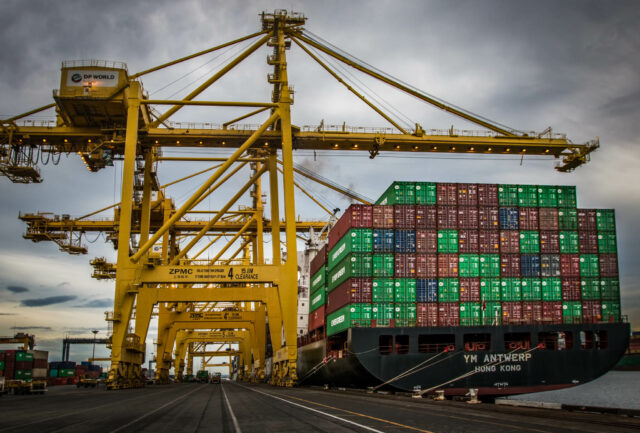
Iran Hopes to Play Spoiler With Planned EU-India Corridor
Publication: Eurasia Daily Monitor Volume: 20 Issue: 140
By:

On September 9, at the G20 summit in New Delhi, United States President Joe Biden signed a memorandum of understanding (MoU) with India and a number of Middle Eastern countries and European Union member states. The agreement aims to create a new trade corridor linking India to the Middle East and the West. Biden declared that “this is a real big deal,” and his national security aides suggested that the new passage would go a long way to preventing China’s Belt and Road Initiative (BRI) from dominating trade between Asia and Europe. The signatories are committed to meeting within 60 days to flesh out the details, and, if these plans are indeed realized, Biden’s enthusiasm will have been proven right (Whitehouse.gov, September 9, accessed September 12; News.ru, September 9). Nevertheless, it is possible that the project’s costs could prove daunting, and an Iran backed by Russia, as well as China, could play spoiler here.
The overall vision for the project reflects that it is really two projects in one. And both will require the development of intermodal shipping in places where such efforts have only just begun. The project will require, first, the completion of a new eastern corridor between India and the Middle East and, second, the expansion of a western route between the Middle East and Europe (Whitehouse.gov, accessed September 12). Iran sits astride the land route between the two and thus has the ability to project power into the Indian Ocean. In both cases, countries that are only just beginning to master the complexities of intermodal transportation will have to develop the infrastructure and skill sets to be able to transfer goods from trains to ships to trucks at high speeds to make this new corridor competitive with other, already established routes.
Russia continues to develop transit corridors that have the potential to greatly benefit Iran and China. As a result, Tehran and Beijing could serve to torpedo the proposed EU-India corridor. On August 27, the first train carrying Russian container cargo passed through Iran to Saudi Arabia. The cargo transited on a route that Moscow has suggested will extend from St. Petersburg in northwestern Russia to Mumbai as part of a broader north-south corridor, which Tehran strongly supports. Beijing has shown great interest in this project as well (News.ru, November 23, 2022; 1prime.ru; Paluba.media; Moscow-baku.ru, August 28).
Iran views itself as the chief beneficiary of Russian-dominated transit routes. As such, Iranian officials immediately called attention to the recent developments with the Russian north-south route and suggested that the pursuit of alternative routes was completely unjustified. Hojatollah Abdolmaleki, secretary-general of Iran’s Free Zones High Council, publicly celebrated the flow of cargo from Russia to Saudi Arabia. He declared, “One of the important transportation corridors, within the framework of the north-south and east-west international transportation corridors, is the one that stretches from Iran’s border with the Russian Federation, passes through Iranian territory and then reaches Arab countries, Saudi Arabia in particular. … It then extends to other countries as well,” including India (1prime.ru, August 27; Casp-geo.ru, September 6)
This north-south corridor is not without its problems. (For expanded discussion on those issues, see EDM, April 11, June 7, August 8). Nevertheless, Abdolmaleki asserted that the successful delivery to Saudi Arabia demonstrates that “this corridor has already begun to function” and, “like all corridors passing through Iran,” is already intermodal in its operation. He further claimed that “the territory of the Iranian state is an excellent logistics route from a natural and financial point of view” (1prime.ru, August 27).
The Iranian official went on to point out that, geographically, Iran sits smack dab in the middle of several key land routes. He argued, “There is no alternative to this path. And those who try to find it and refuse our indicated path are wasting their time. Our transit route itself is safe, and millions of tons of goods already pass through it at very low transportation costs. We invite our southern and northern neighbors to take advantage of the capabilities of our logistics routes” rather than waste their time and money on alternatives. Abdolmaleki’s remarks came ten days before the New Delhi MoU was signed. And there is little doubt that Iran will present precisely these arguments to the signatories of the US-backed grouping. It is, therefore, not out of the question that at least some of the countries involved in the project may give the Russian route a second look before spending large sums of money to bypass it.
Russian President Vladimir Putin can likely be counted on to lend Russian support to Iran’s position. After all, Tehran’s stance is only possible thanks to Moscow’s efforts. Any victory for Iran will be a win for Russia as well. The bigger question here is where Beijing’s official position stands. After signing the MoU in New Delhi, some of Biden’s aides suggested that China’s BRI is the real target of the agreement (News.ru, September 9). Consequently, Beijing may decide to take Tehran’s side in this dispute in hopes of extending the BRI in such a way that it will avoid being sidelined by similar prospective projects in the future.
All this means that the path ahead for the EU-India corridor will not be an easy one. Ensuring it succeeds will require diplomatic efforts not only with the signatories to the agreements but with other countries as well—countries, like Iran and Russia, that the West has anything but warm relations with at present.



